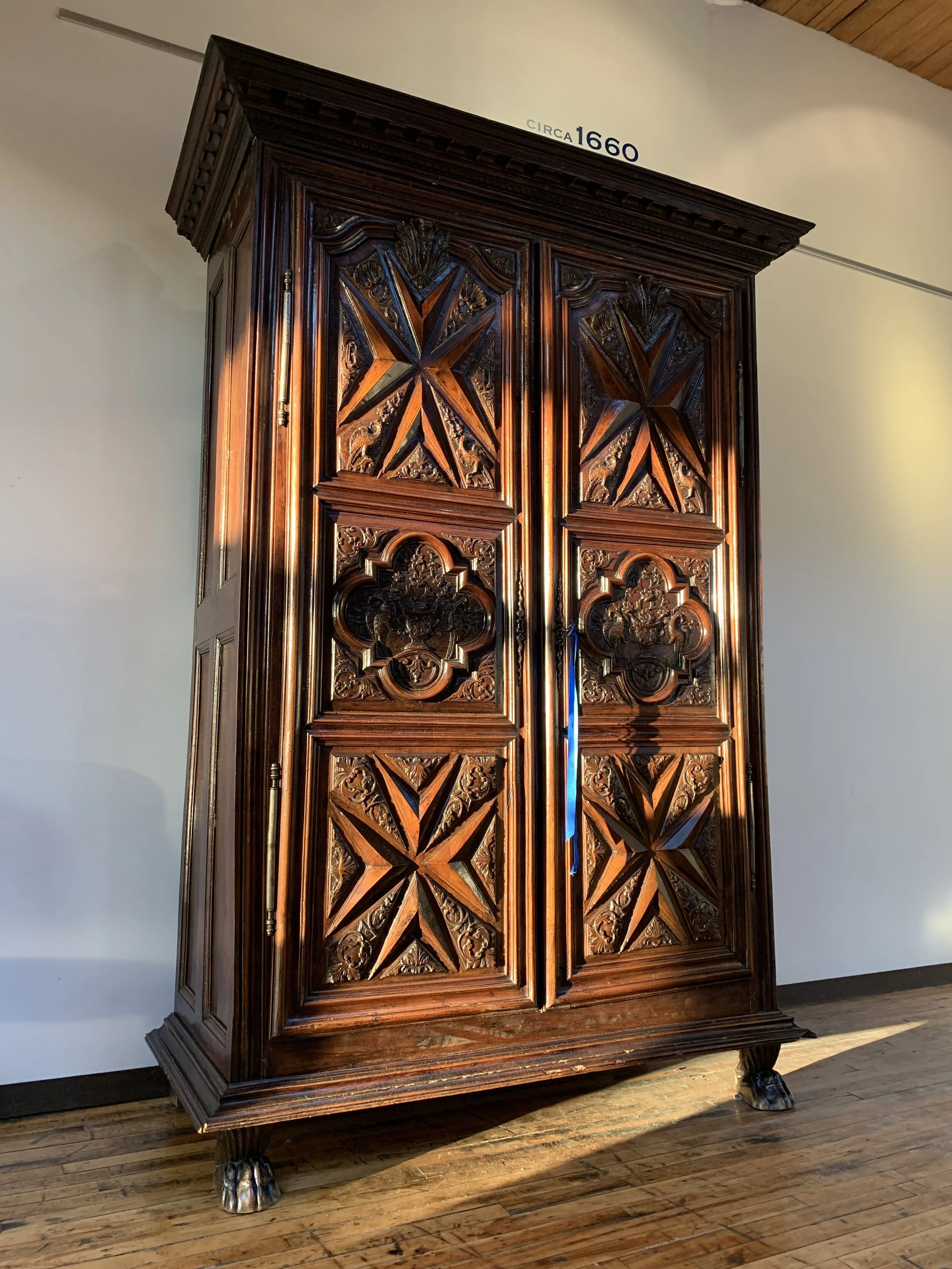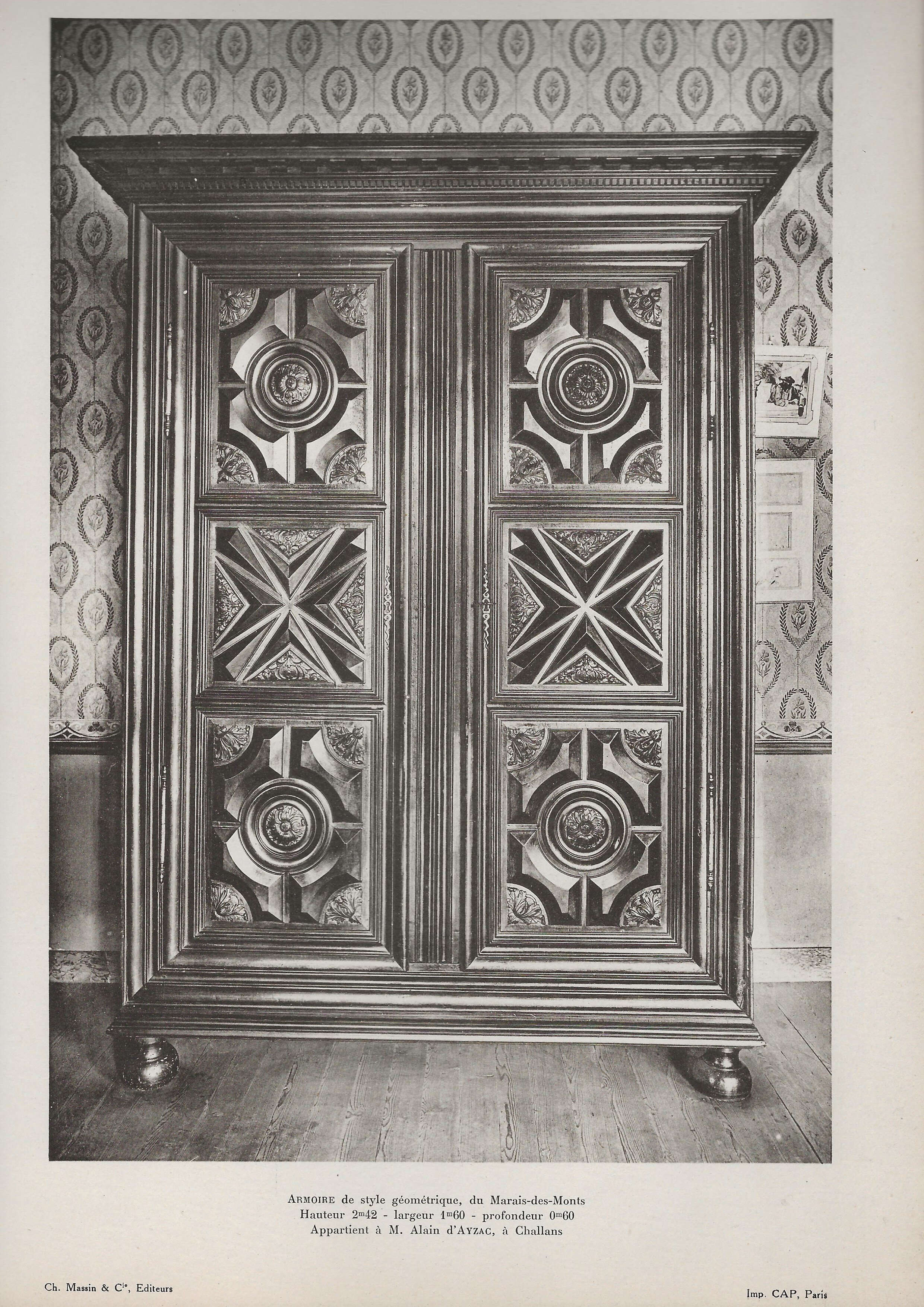Armoire Nantaise circa 1690
This armoire dates from the second half of the 17th century and originates most likely from the port city of Nantes. It would have furnished the château or city mansion of a nobleman or wealthy merchant perhaps engaged in commerce through the East India Company (based in Nantes). The former option is more likely because the Maltese crosses on the wardrobe are probably symbols of the Order of Malta which was reserved for nobility.
The wood paneling of the room for which this armoire was commissioned would have necessarily matched the doors of the wardrobe. Boiserie is the French word for highly decorative and intricately sculpted wood paneling, hence such armoires are referred to as “armoires de boiserie.”
The doors are divided into three rectangular panels sculpted with Maltese crosses in high relief and quadrilobe moldings. The straight cornice with a frieze of dentils and form belonging to the early the 17th century is also typical of pieces from Nantes. This original Nantaise style spread along the Atlantic coast. The same quadrilobe moldings and Maltese crosses are found in Brittany and in the southwest closer to Bordeaux.
The sculpted decor of the doors is inspired by the antique grotesque designs of the 17th century trendsetting draughtsman, designer, and ornamentalist, Jean Berain (1640-1711). Berain is an Art History figure remembered for having designed the bedroom and office of King Louis XIV at Versailles in 1674. The motifs on these doors could have also been inspired by the recueils of two other ornamentalists, Daniel Marot (1650-1712) or even Jacques Androuet du Cerceau from the previous century (recueil de grotesques).
The plumes of acanthus leaves at the center top of each door are emblematic motifs of the time. Remarkably, they are in an original state of conservation. Their plush form combined with the slightly curved “policeman’s hat” shape of the upper molding from which they deploy, suggest that this piece was made more towards the late 17th century rather than circa 1650. Furthermore, the carved lions feet adorned with a type of scallop shell indicate a piece of great quality.
A final exceptional aspect of this armoire is that it has conserved its original shelving, complete with hand forged nails and various calligraphic ink markings of home inventory or perhaps the maker’s cataloging numbers.
H: 8ft 2 in. L: 69 in. D: 29 in.
*Dimensions given for widest part at top cornice
Myers & Monroe, LLC


